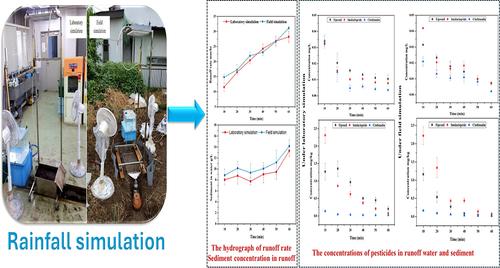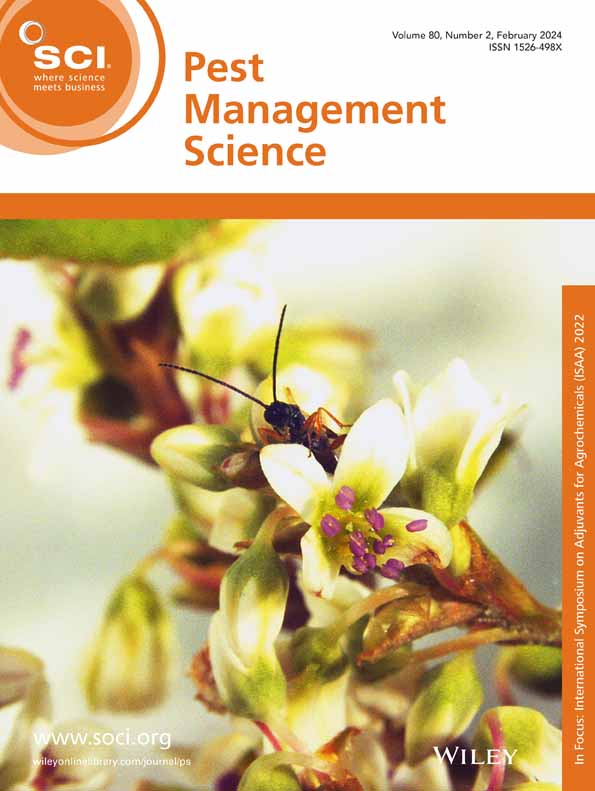Validation of a small‐scale portable rainfall simulator on the simultaneous transport of sediments and pesticides in agriculture soils
IF 3.8
1区 农林科学
Q1 AGRONOMY
引用次数: 0
Abstract
BACKGROUNDSoil erosion and sedimentation accelerate land degradation, especially in East Asia. Surface runoff is a major pathway for pesticide transport into surface and groundwater, threatening aquatic ecosystems. This study investigated the runoff rate, sediment yield, pesticide transport, and pesticide concentrations across soil layers using a small‐scale portable rainfall simulator (0.33 × 0.48 m) under laboratory and field conditions.RESULTSCumulative sediment runoff reached 2.1 and 2.3 ton ha

求助全文
约1分钟内获得全文
求助全文
来源期刊

Pest Management Science
农林科学-昆虫学
CiteScore
7.90
自引率
9.80%
发文量
553
审稿时长
4.8 months
期刊介绍:
Pest Management Science is the international journal of research and development in crop protection and pest control. Since its launch in 1970, the journal has become the premier forum for papers on the discovery, application, and impact on the environment of products and strategies designed for pest management.
Published for SCI by John Wiley & Sons Ltd.
 求助内容:
求助内容: 应助结果提醒方式:
应助结果提醒方式:


